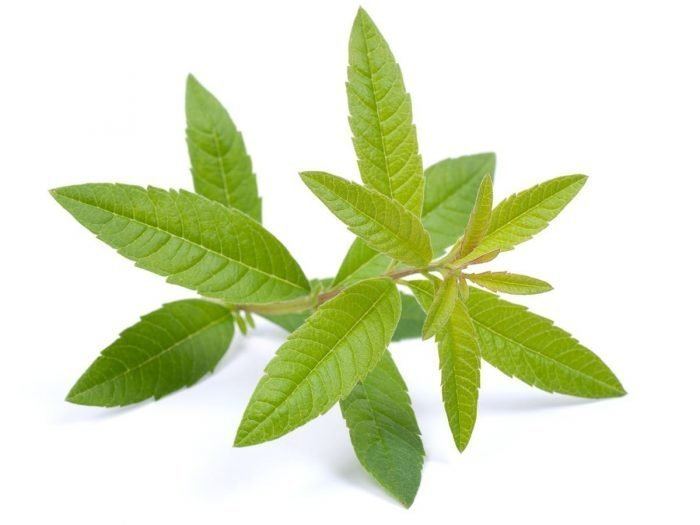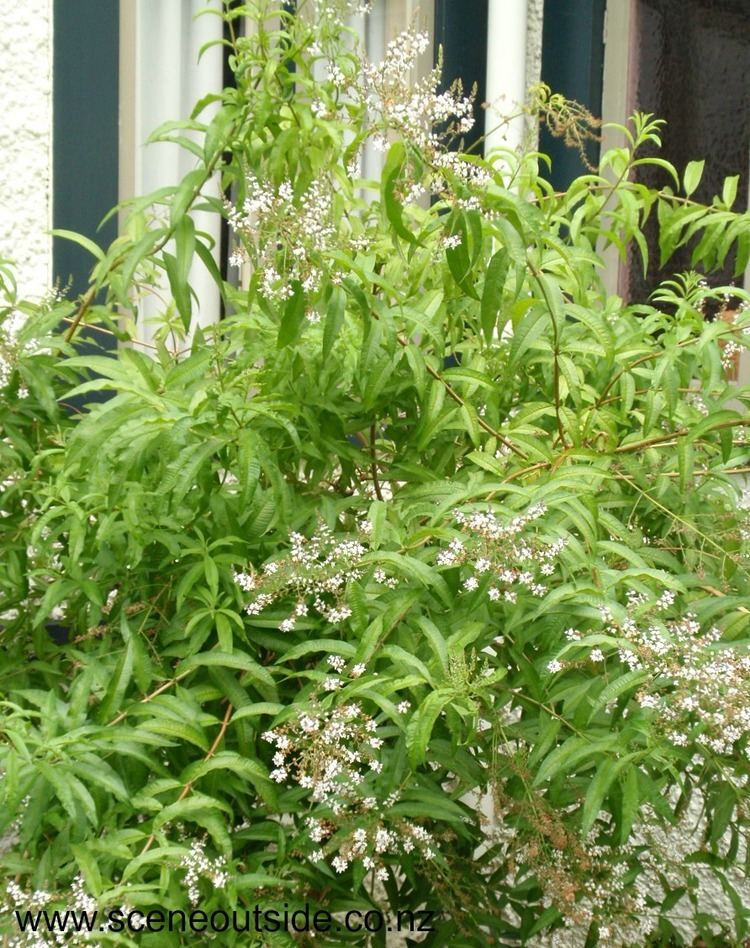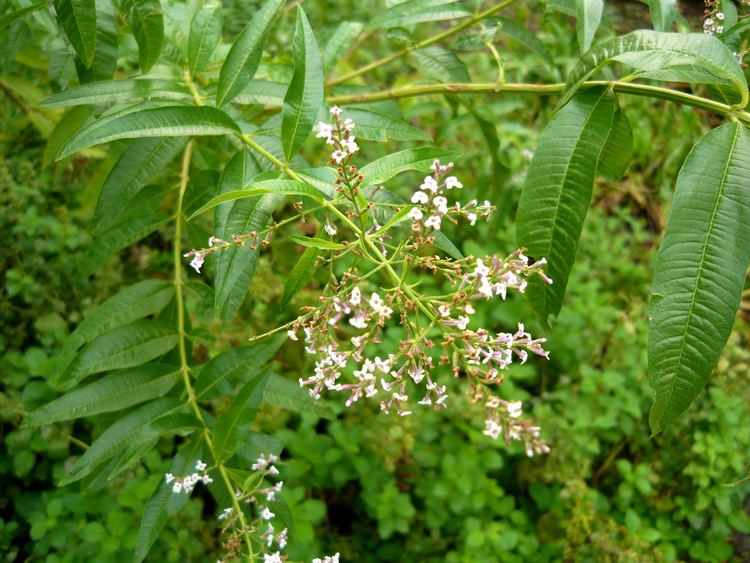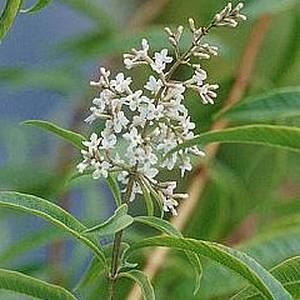Higher classification Aloysia | Genus Aloysia | |
 | ||
Similar Lantana, Lippia, Duranta erecta | ||
Aloysia citrodora sun tea video
Aloysia citrodora is a species of flowering plant in the verbena family Verbenaceae, native to western South America. Common names include lemon verbena and lemon beebrush. It was brought to Europe by the Spanish and the Portuguese in the 17th century and cultivated for its oil.
Contents

Description
Lemon Verbena is a perennial shrub or subshrub growing to 2–3 m high. The 8-cm-long, glossy, pointed leaves are slightly rough to the touch and emit a powerful scent reminiscent of lemon when bruised (hence the Latin specific epithet citrodora—lemon-scented).

Sprays of tiny purple or white flowers appear in late spring or early summer. It is sensitive to cold, losing leaves at temperatures below 0 °C (32 °F), although the wood is hardy to −10 °C (14 °F). Due to its many culinary uses, it is widely listed and marketed as a plant for the herb garden.
Uses

Lemon verbena leaves are used to add a lemon flavor to fish and poultry dishes, vegetable marinades, salad dressings, jams, puddings, Greek yogurt and beverages. It also is used to make herbal teas, or added to standard tea in place of actual lemon (as is common with Moroccan tea). It can also be used to make a sorbet. In addition, it has anti-Candida albicans activity. In the European Union, Verbena essential oils (Lippia citriodora Kunth.) and derivatives other than absolute are prohibited when used as a fragrance ingredient (Commission Directive 2009/164/EU of 22 December 2009).

Moderate antioxidant supplementation with lemon verbena extract protects neutrophils against oxidative damage, decreasing the signs of muscular damage in chronic running exercise without blocking the cellular adaptation to exercise.
Aloysia citriodora extract shows antioxidant properties that could play an important role in modulating GSH-reductase activity in lymphocytes and erythrocytes and protecting plasma from exercise oxidative damage.
Lemon verbena extract containing 25% verbascoside showed strong antioxidant capacity, especially in a lipophilic environment, which was higher than expected as concluded from the antioxidant capacity of pure verbascoside, probably due to synergistic effects. The capacity of verbascoside to act as an effective radical scavenger in lipophilic environments was also shown. Verbascoside-enriched extracts might have interesting applications in cosmetic, nutraceuticals or functional food. Although some "in vitro" genotoxicity of verbascoside has been reported on human lymphocytes with an involvement of PARP-1 and p53 proteins, subsequent "in vivo" tests reported no genotoxicity for high dosage oral administration.
When making teas, it is said to help with muscle spasms, stomach pain, menstrual cramping, anxiety, and a fever reducer.
Chemistry
The major isolates in lemon verbena oil are citral (30–35%), nerol and geraniol. Extracts of lemon verbena also contain verbascoside.
Synonyms
Synonyms for lemon verbena are Verbena triphylla L'Hér., Verbena citriodora Cav., Lippia triphylla, Lippia citriodora, Aloysia citriodora (Cav.) Ort.
Garden history
The first European botanist who publicly noticed this plant was the French Philibert Commerson, who collected in Buenos Aires on his botanical circumnavigation with Bougainville, about 1767. The plant had already been quietly imported directly into the Real Jardín Botánico de Madrid, where in 1797 professors Casimiro Gómez Ortega and Antonio Palau y Verdera named it, though they did not yet effectively publish it, Aloysia citrodora in Latin and "Hierba de la Princesa" in Spanish, to compliment Maria Louisa of Parma, Princess of Asturias the wife of the Garden's patron Infante Carlos de Borbon, Prince of Asturias and son of king Carlos III. The name was later effectively published in the first volume of Palau's Parte Práctica de Botánica in 1784.
Unofficial importations from Spanish America seldom fared well: when another French botanist Joseph Dombey landed his collections at Cadiz in 1785 they were impounded and left to rot in warehouses, while he was refused permission even to have seeds planted. Among the bare handful of plants Dombey had assembled during eight years at Lima, lemon verbena survived.
Meanwhile, Gómez Ortega sent seeds and specimens of the plant to Charles Louis L'Héritier de Brutelle in Paris; L'Héritier published it as Verbena triphylla in the second fascicle his Stirpes Novae. published in December 1785 or January 1786. From Paris John Sibthorpe, professor of Botany at Oxford, obtained the specimen that he introduced to British horticulture: by 1797 lemon verbena was common in greenhouses around London, and its popularity as essential in a fragrant bouquet increased through the following century.
This plant has gained the Royal Horticultural Society's Award of Garden Merit.
